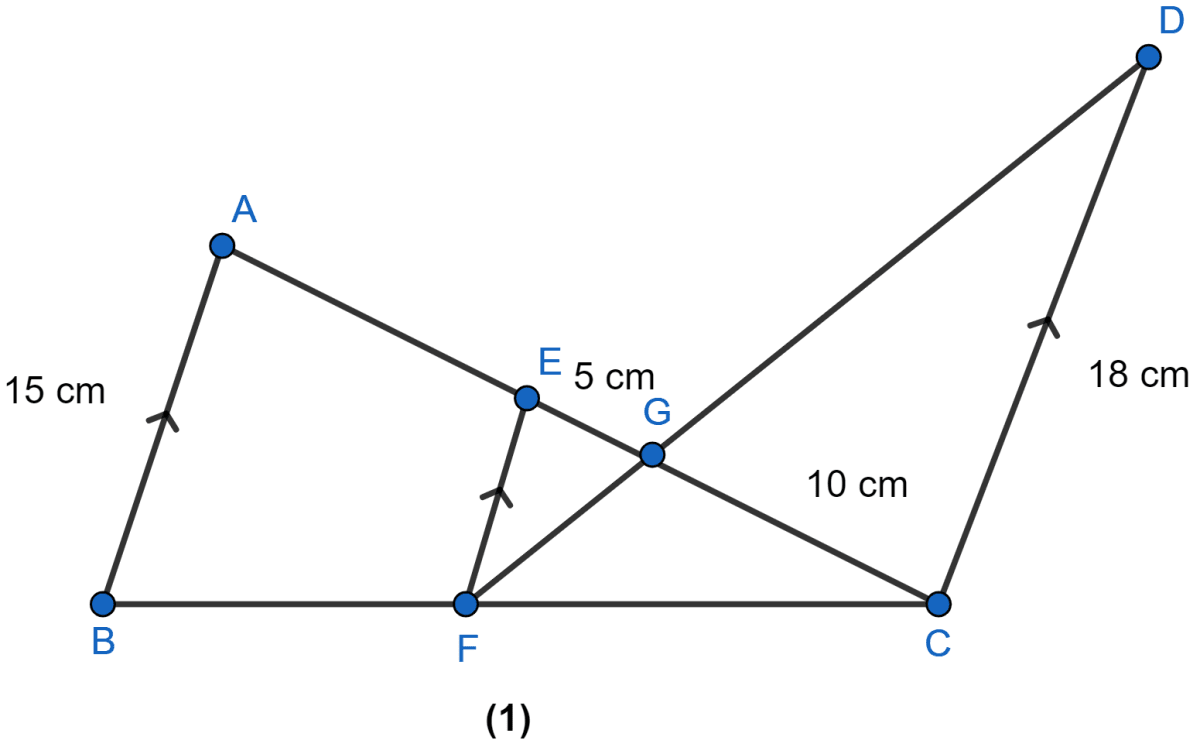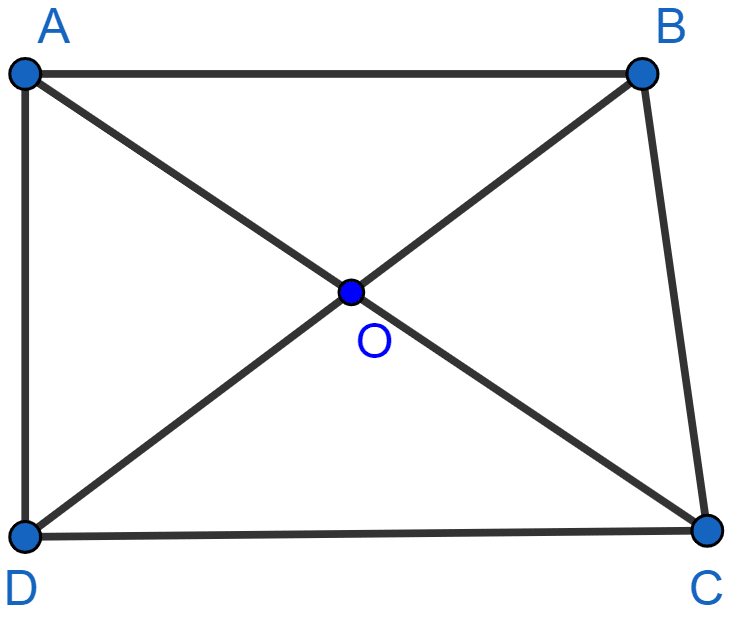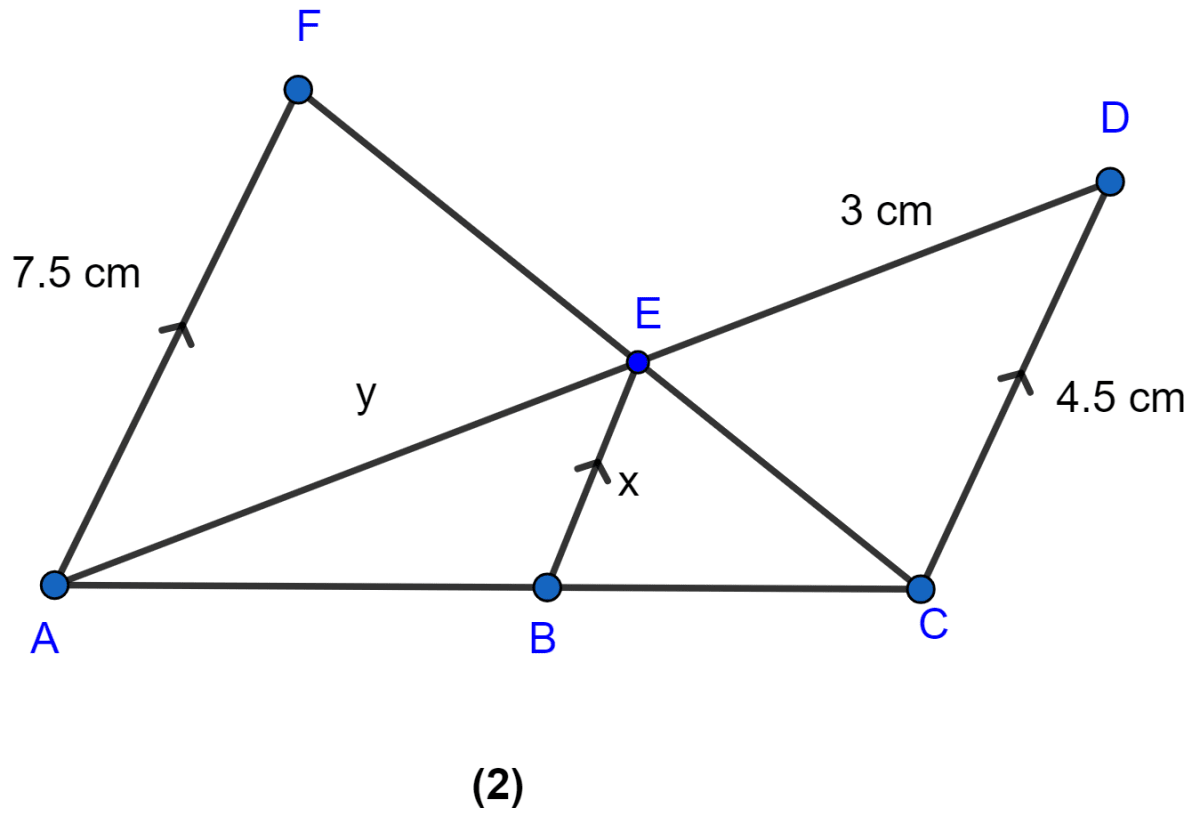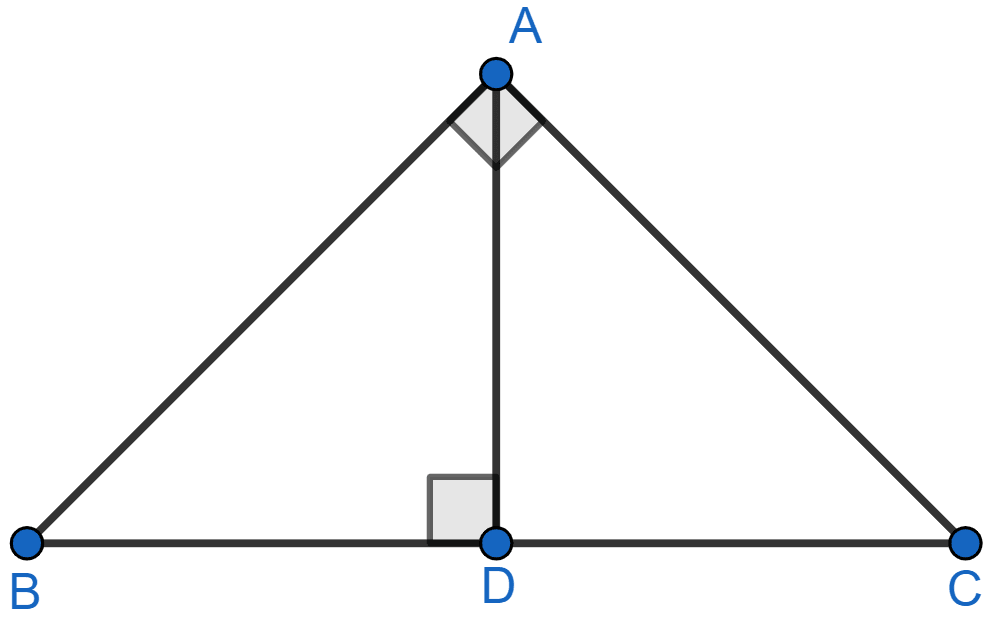Mathematics
In the figure (1) given below, AB, EF and CD are parallel lines. Given that AB = 15 cm, EG = 5 cm, GC = 10 cm and DC = 18 cm. Calculate
(i) EF (ii) AC

Similarity
75 Likes
Answer
(i) Consider △EFG and △CGD
∠ EGF = ∠ CGD [Vertically opposite angles]
∠ FEG = ∠ GCD [Alternate angles are equal]
So, by AA rule of similarity △EFG ~ △CGD.
Then,
Hence, the length of EF = 9 cm.
(ii) Consider △ABC and △EFC
∠ C = ∠ C [Common angles]
∠ ABC = ∠ EFC [Alternate angles are equal]
So, by AA rule of similarity △ABC ~ △EFC
Then,
Hence, the length of AC = 25 cm.
Answered By
37 Likes
Related Questions
Prove that the ratio of the perimeters of two similar triangles is the same as the ratio of their corresponding sides.
In the adjoining figure, ABCD is a trapezium in which AB ∥ DC. The diagonals AC and BD intersect at O. Prove that
Using the above result, find the value(s) of x if OA = 3x - 19, OB = x - 4, OC = x - 3 and OD = 4.

In the figure (2) given below, AF, BE and CD are parallel lines. Given that AF = 7.5 cm, CD = 4.5 cm, ED = 3 cm and BE = x and AE = y. Find the values of x and y.

In the given figure, ∠A = 90° and AD ⊥ BC. If BD = 2 cm and CD = 8 cm, find AD.
